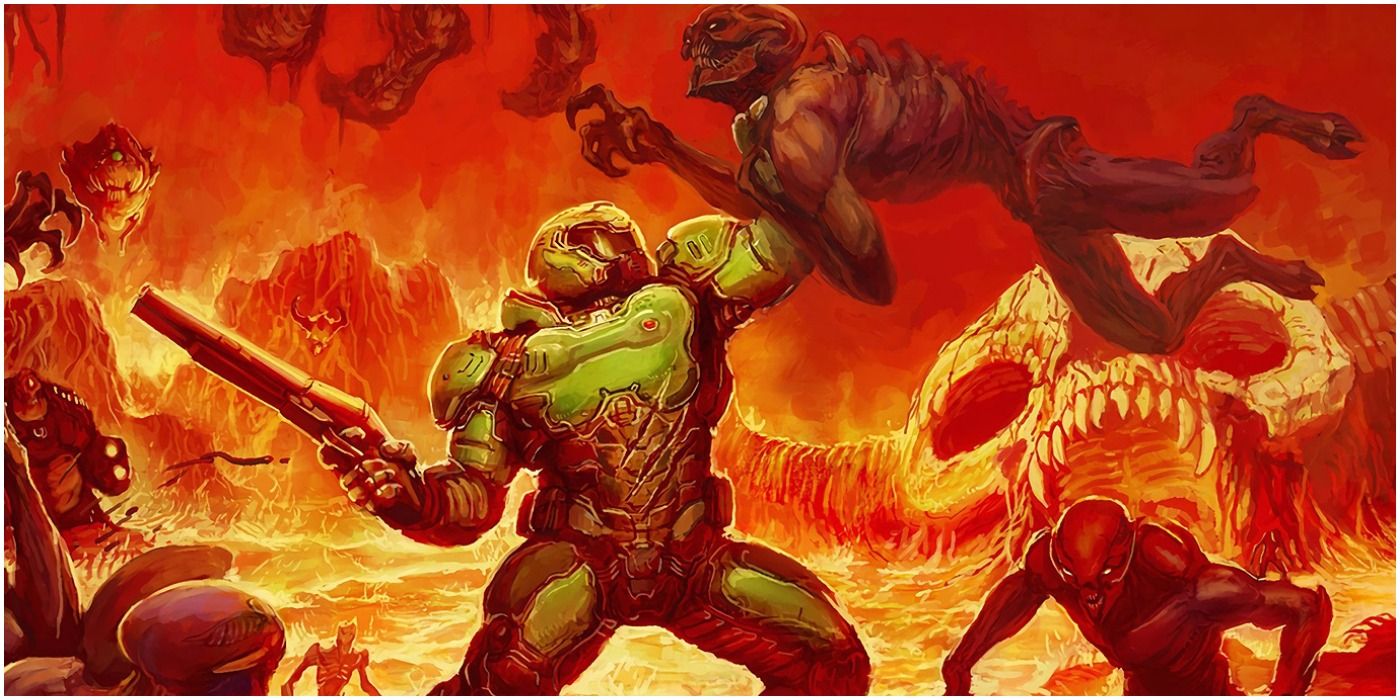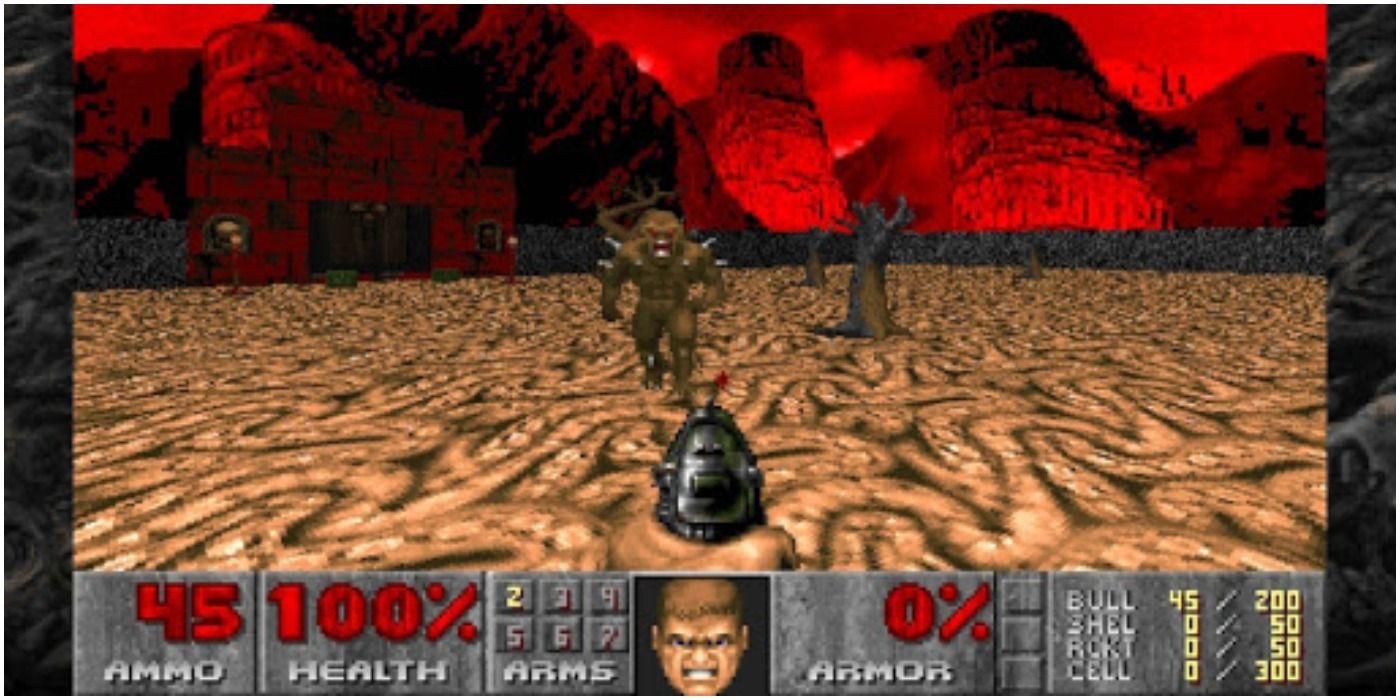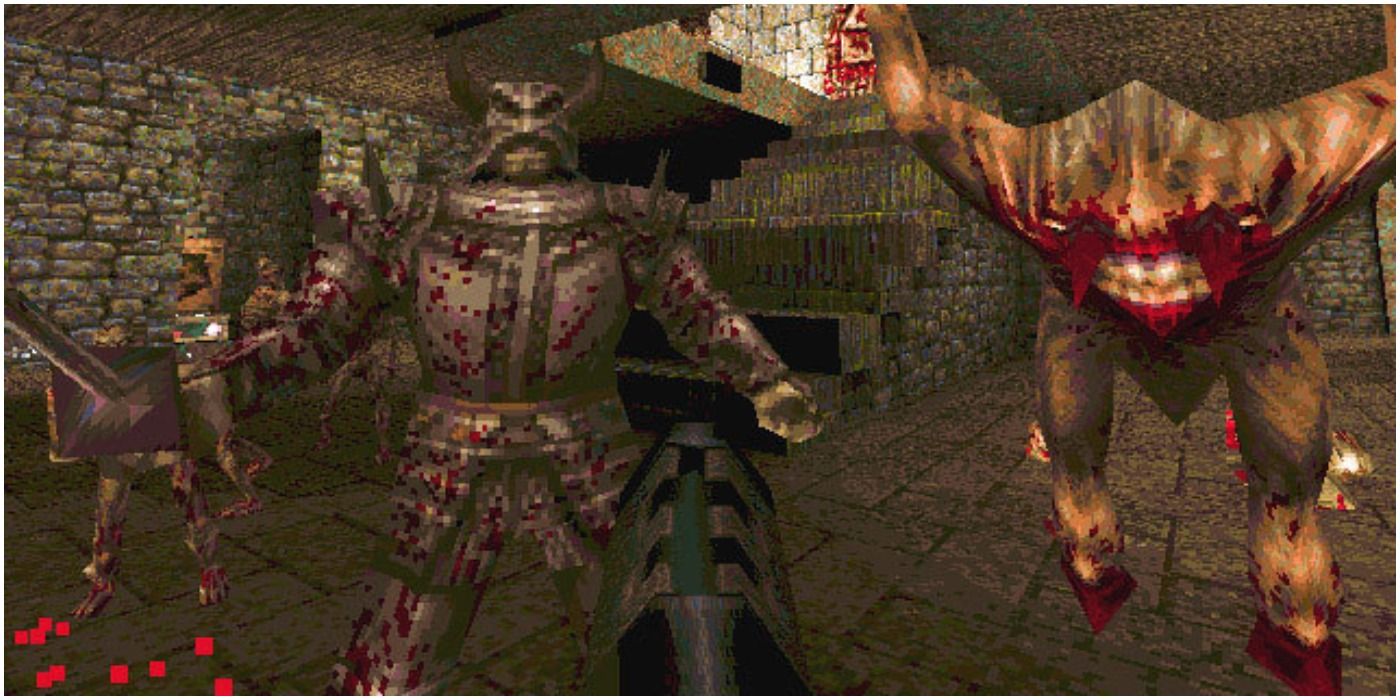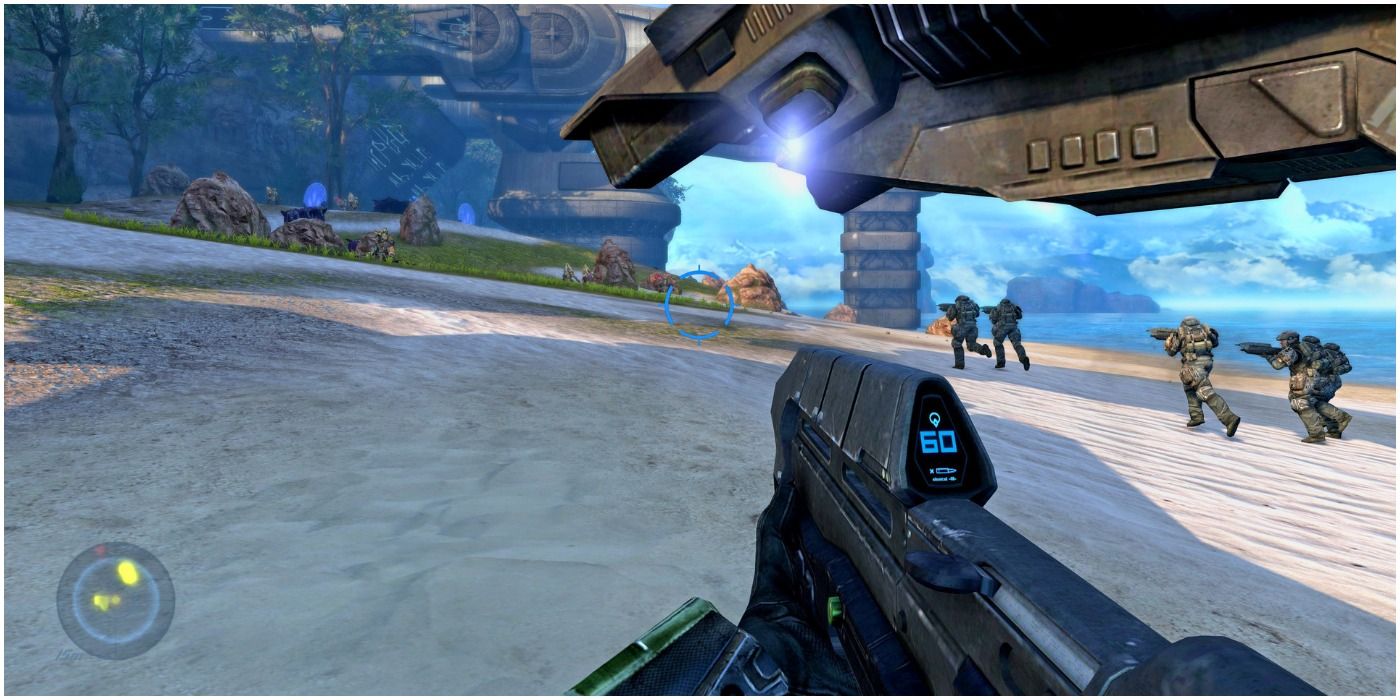The first-person shooter genre has been around for a long time. In that time, many titles people still love now have graced players' systems. Not many titles in a genre can stand out enough to have significantly affected their genre, but there are definitely some big names here. The genre is one of the biggest and most popular types out there.
There's no shortage of big-name FPS titles, but standing out above the crowd, is another task entirely, and one has to have introduced something unique or big in order to reach that status. Not many games manage this, but when they do, they become legendary, just like these four games.
Doom
1993's Doom is considered the blueprint for the FPS genre. It is responsible for popularizing the entire genre, and though not the first attempt at the gameplay style, Doom cemented the idea of 3D shooter games. Players could freely roam around levels, blasting away enemies and collecting items. The game also set one of the bigger precedents for successful shooters: a sprawling, engaging mythology, told in the background so the gameplay was front and center.
Doom also was one of the first games to employ modding, meaning people could edit guns and create levels. Modern times have seen games get mods via the Steam Workshop to use, and this game is what made that possible. Also a big invention taken from the game is the idea of an increasing arsenal. Players get bigger and better weapons as the game goes on, and that idea carried over to pretty much every first-person shooter after that.
Duke Nukem 3D
3d Realms' most famous game, Duke Nukem 3D took what Doom started and took it further. Where Doom had a silent protagonist content to tear his way through enemies, the main character here, Duke Nukem himself, was a wise-cracking, catchphrase spouting one-man army. As Duke blasted his way through an alien invasion, lines like "It's time to kick ass and chew bubblegum," or even competition mocking ones like "I ain't afraid of no Quake," were common. Duke's contribution to the genre was really one big thing-the game pushed the limits of what had been done at the time.
Other games feature an array of standard weapons like shotguns, pistols, and machine guns. Duke Nukem 3D took that and went wild with it. Added to the ever-expanding repertoire of weapons were crazy things like freeze-rays, jetpacks, and a Shrink Gun. While other games played it straight, this game came and decided crazy was a good look for the genre. It ensured that first-person shooters could have fun and embrace sillier concepts.
Quake
Quake is similar to Doom but stands out in its own unique way. The game used a new engine to introduce a more realistic world than had been offered in games before, the Quake Engine. The new engine's use of Real-Time 3D Rendering made the game visually stand out and technologically do what other games couldn't. The engine also enabled the creation of what is known today as the Machinima artform.
Aside from the revolutionary engine, Quake also made popular the idea of online multiplayer through deathmatches. This was one of the first games in the genre to have players connect to a server instead of LAN, and it paved the way for all modern games that connect people for multiplayer matches. This made it one of the first games to become a kind of eSport, and it isn't hard to see why given the gameplay innovations. Players could strafe jump, bunny-hop, rocket jump and do many of the maneuvers that are standard today.
Halo
Halo is a more modern game by the standards of first-person shooters, but it's no less influential for it. The game is responsible for not only making rechargeable shields a feature, but also revolutionizing console FPS games. Here, players first got a formula for how these games would work on a console since most games in the genre were strictly PC based up to that point. The control scheme laid out in Halo would be the blueprint for pretty much all console-based games like it.
Halo also brought about the popularity of pay to play online services like Xbox Live. Xbox Live was needed to use the game's online multiplayer function, and games hadn't really offered a service for the concept until this, so it was a pioneer for the genre in that sense. Games before then ran on dedicated servers or were played via LAN, so having a service that enabled play even if players weren't physically together was big for the genre. It shaped the multiplayer field.





